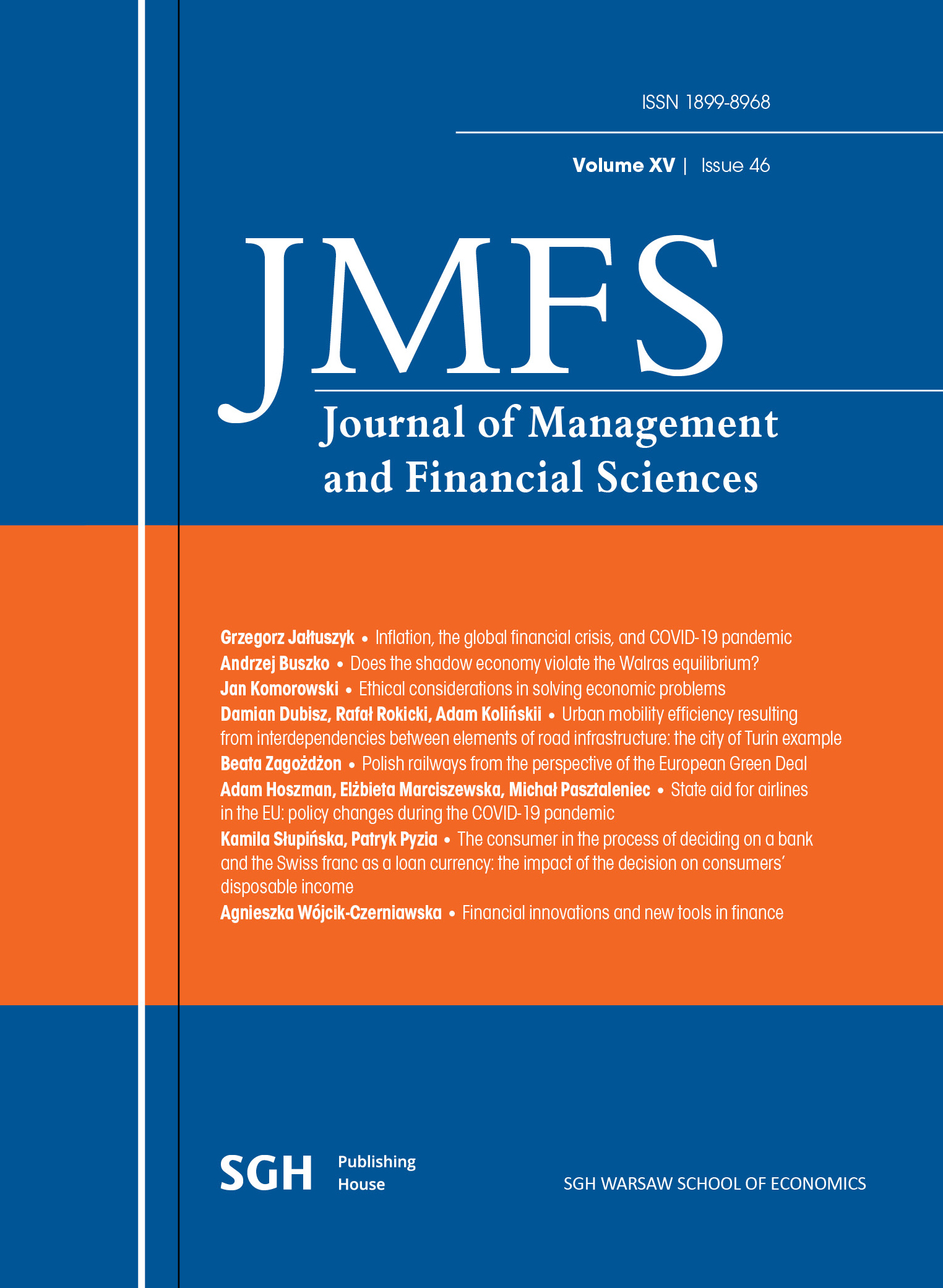Polish railways from the perspective of the European Green Deal
Main Article Content
Abstrakt
In January 2020 the European Parliament approved a resolution on the Green Deal, which aims to ensure that the EU achieves climate neutrality by 2050. Crucial to achieving the strategy’s goals is sustainable and green mobility. Rail transport as the most sustainable mode of transport is an important factor in achieving these changes.
This article presents a synthetic diagnosis of the position of railways on the passenger transport market in Poland, in the context of the Green Deal assumptions. The essential analysis was preceded by a discussion of the structure of external transport costs, which is one of the determinants of the Green Deal. Trends in passenger transport were then identified and attention was paid to the shift of inter-industry relations in favour of rail transport. An analysis of the structure of regional and agglomeration rail transport was also carried out. Developments in this market area show a revitalisation of agglomeration rail links, which fits in with the sustainable mobility strategy.
Downloads
Article Details
Bibliografia
2. de Palma, A., Lindsey, R., Quinet, E., Vickerman, R. (2011). A Handbook of Transport Economics. Cheltenham UK, Northampton USA: Edward Elgar Publishing.
3. External Costs of transport (accidents, environmental and congestion costs) in western Europe(2000). Study on behalf of the International Union of Railways UIC. Paris: INFRAS Zurich, IWW University of Karlsruhe.
4. External Costs of Transport in Europe. Update Study (2004). Zurich/Karlsruhe: INFRAS, IWW University of Karlsruhe.
5. External Costs of Transport in Europe. Update Study for 2008 (2011). Study on behalf of the International Union of Railways UIC. Paris: Delft, CE Delft.
6. Friedrich, R., Bickel, P. (2001). Environmental External Costs of Transport. Berlin: Springer.
7. GUS (2022). Concise Statistical Yearbook of Poland [Mały Rocznik Statystyczny Polski]. Warszawa: GUS (Statistics Poland).
8. Handbook on the external costs of transport (2020). European Commission, Luxembourg: Publications Office of the European Union.
9. Keim, M., Cermy, P. (Eds.) (2021). European Mobility Atlas. Facts and figures about transport and mobility in Europe. Brussels: Heinrich-Böll-Stiftung.
10. Kuciński, K. (Ed.), (2000). Metodologia nauk ekonomicznych. Warszawa: Difin.
11. Ministerstwo Klimatu i Środowiska RP (2020). Badanie świadomości i zachowań ekologicznych mieszkańców Polski. Raport z badania trackingowego. Retrieved from: https://www.gov.pl/web/klimat/badania-swiadomosci-ekologicznej (accessed 11.08.2022).
12. Regulation 2021/1119 EU of the European Parliament and of the Council of 30 June 2021 establishing the framework for achieving climate neutrality and amending Regulations (EC) No 401/2009 and (EU) 2018/1999 (European Climate Law). OJ L 243, 09.07.2021, 1.
13. Report ST 8642/2021 (2021). Putting Rail at the Forefront of Smart and Sustainable Mobility. Brussels: Council of the EU.
14. Statistical pocketbook (2021). EU Transport in Figures. Loxembourg: Publications Office of the European Union.
15. UTK (2022). Sprawozdanie z funkcjonowania rynku transportu kolejowego 2021. Warszawa: UTK. Retrieved from: https://utk.gov.pl/pl/dokumenty-i-formularze/opracowania-urzedu-tran/18979, Sprawozdanie-z-funkcjonowania-rynku-transportu-kolejowego-2021.html (accessed 18.08.2022).
